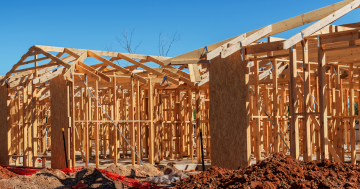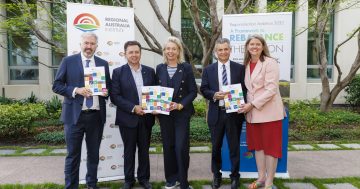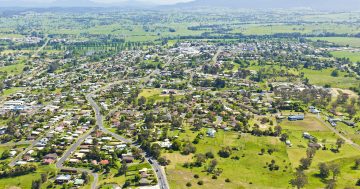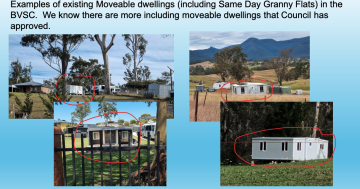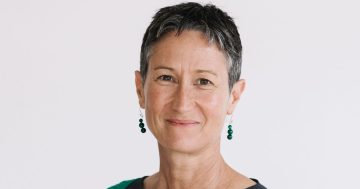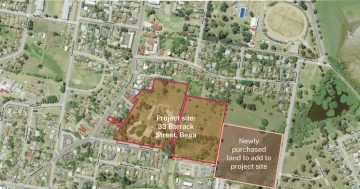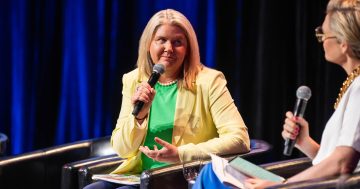
Shadow Housing Minister Jason Clare and Member for Eden-Monaro Kristy McBain listen to housing providers and social services during a recent roundtable in Cooma. Photo: Kristy McBain Facebook.
Figures released by the peak industry body for real estate and property professionals in NSW show rental vacancy rates in the state’s south east are less than one per cent.
The Real Estate Institute of NSW’s (REINSW) March 2021 Vacancy Rate Survey, which examined 113,568 rental properties, found a residential vacancy rate of 0.8 per cent on the South Coast, 0.9 per cent in Murrumbidgee and 0.6 per cent in the South Eastern area which is situated between the South Coast and Murrumbidgee.
That’s compared to a residential vacancy rate of 3.5 per cent in March 2020 in the South Eastern area, 4.8 per cent on the South Coast and 2 per cent in Murrumbidgee.
On Tuesday 4 May, the federal Shadow Housing Minister Jason Clare and Member for Eden-Monaro Kristy McBain, both from the Australian Labor Party, joined a discussion in Cooma on housing and homelessness in those areas.
Other attendees included housing and social service providers coordinated by the Monaro Domestic Violence Committee, Canberra Joint Organisation Chief Executive Officer Kalina Koloff and mayors and general managers from councils in the Bega Valley, Snowy Monaro, Snowy Valleys, Yass Valley, Upper Lachlan Shire and Queanbeyan-Palerang.
Speaking after the meeting, Mr Clare said the housing crisis in the south east was driven by people moving from cities to regional areas during COVID-19 and that the problem was particularly bad in Cooma due to workers moving for the Snowy 2.0 hydropower project.

Snowy Monaro Mayor Peter Beer, MP Kristy McBain and MP Jason Clare in Jindabyne ahead of the meeting. Photo: Kristy McBain Facebook.
The latest REINSW figures support Mr Clare’s view showing Sydney’s rental vacancy rate on the rise as regional areas tighten.
Vacancies in Sydney now sit at 4 per cent – up 0.9 per cent from February 2021.
“This rise brings vacancies in Sydney to their highest level since October 2020. Feedback from our members in these areas indicates that the exodus of tenants from Sydney is continuing,” REINSW CEO Tim McKibbin said.
Mr McKibbin also attributed the crisis to people returning to Australia during the pandemic which not only added to the demand for housing but encouraged landlords to sell their rental properties while people were prepared to pay a higher price to secure a home.
He said the only solution was to build more houses.
Mr Clare said stories from the meeting were rife of rentals doubling in price, tenants told to vacate so the landlord can re-let the property for more and people in well paid jobs approaching charities such as Mission Australia for food vouchers because their rent is too expensive.
“People in jobs that pay as much as $100,000 per year are contacting Mission Australia because their rent has gone up and they don’t have money left over to pay for things like food,” he said.
Mr Clare blamed the Federal Government for not building more housing for Snowy 2.0 workers.
“Snowy 2.0 is a great project for the region, but the Federal Government should have built more housing as part of it to accommodate workers. That housing, after the project was built, would provide a valuable resource of more affordable housing for the region in the long-term,” he said.
Mr Clare said he had been pushing for more money in the Federal Budget for social and affordable housing for the past 12 months.
Mr Clare said Labor will release its policies closer to the election next year, but that his party had committed to putting a plan in place to fix the housing crisis and would work with all levels of government to do so.
A spokesperson for NSW Housing Minister Melinda Pavey said the NSW Government understood that Snowy 2.0 and other local projects “put significant pressure on demand for the private market and key worker housing in the Cooma region, but that demand is not in social housing.”
“We’ve been in discussions with council and we are looking at all government-owned assets in the region to see where we can assist with additional worker housing,” the spokesperson said.
The federal Housing Minister and Assistant Treasurer, Michael Sukkar, said the Commonwealth would spend more than $8.2 billion in housing and homelessness programs between 2020-21.
“That includes $1.6 billion paid to the states and territories to deliver and maintain state social housing through the National Housing and Homelessness Agreement that supports housing outcomes for 1.7 million Australians,” Mr Sukkar said.







